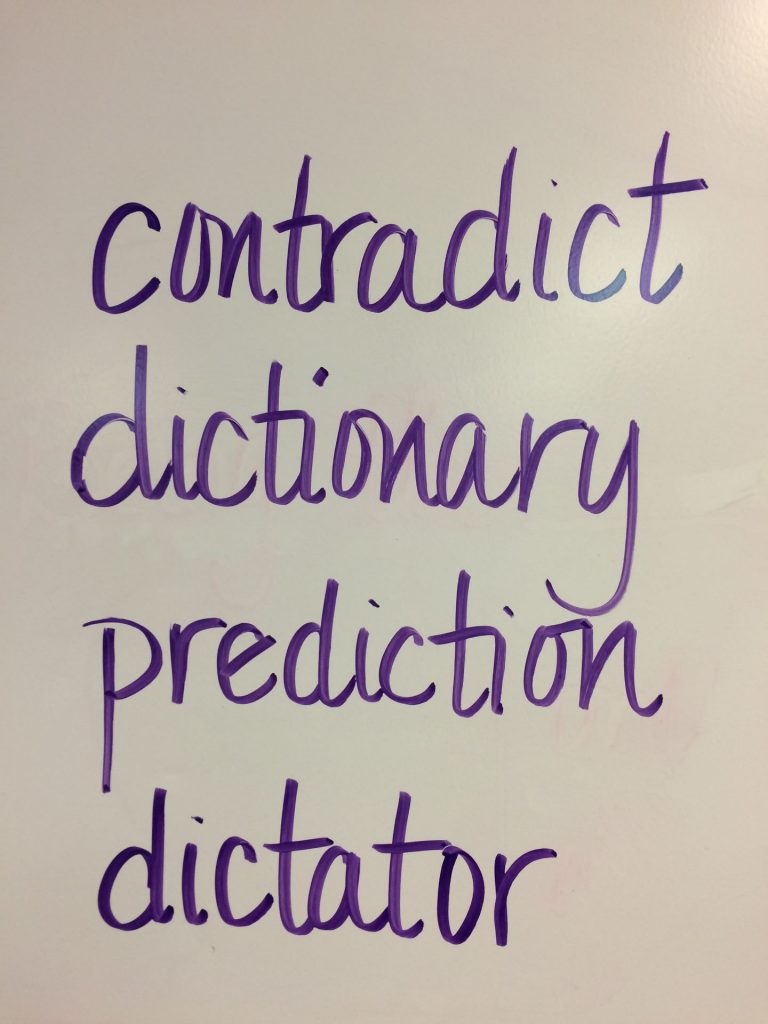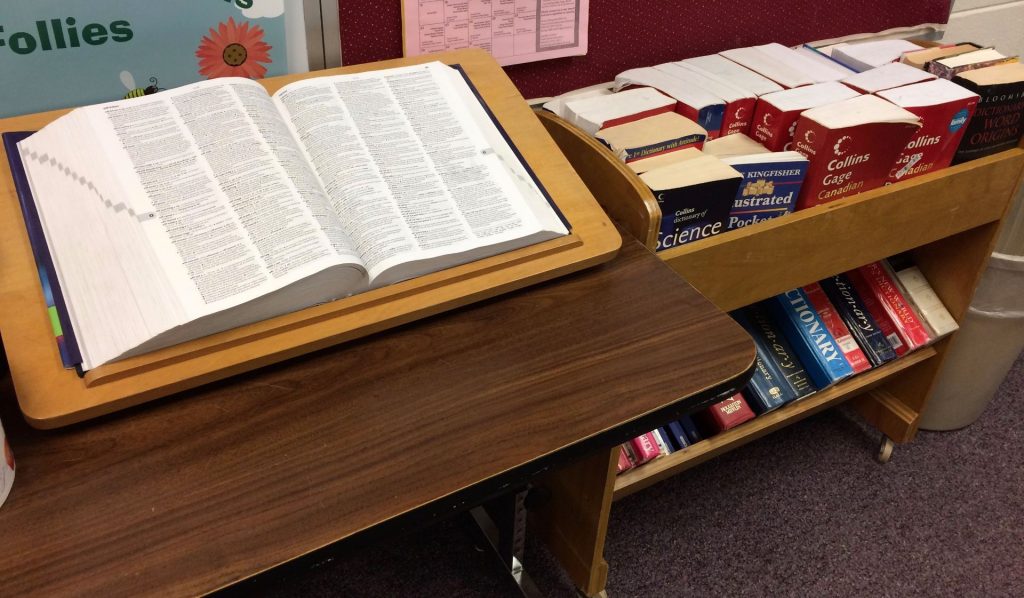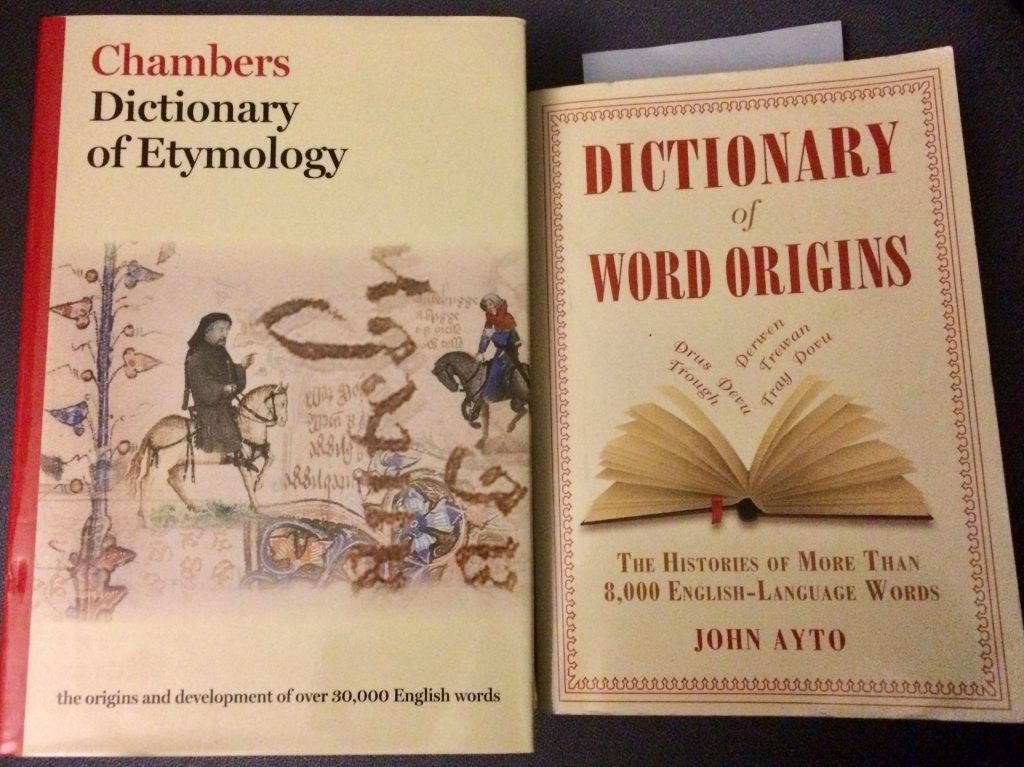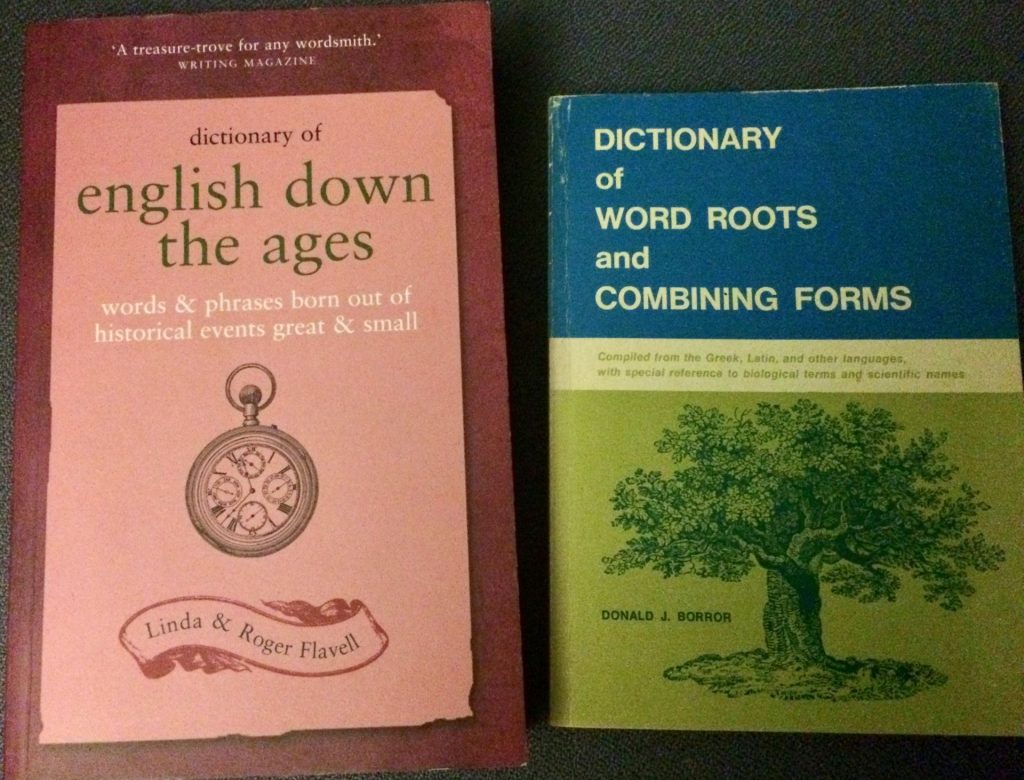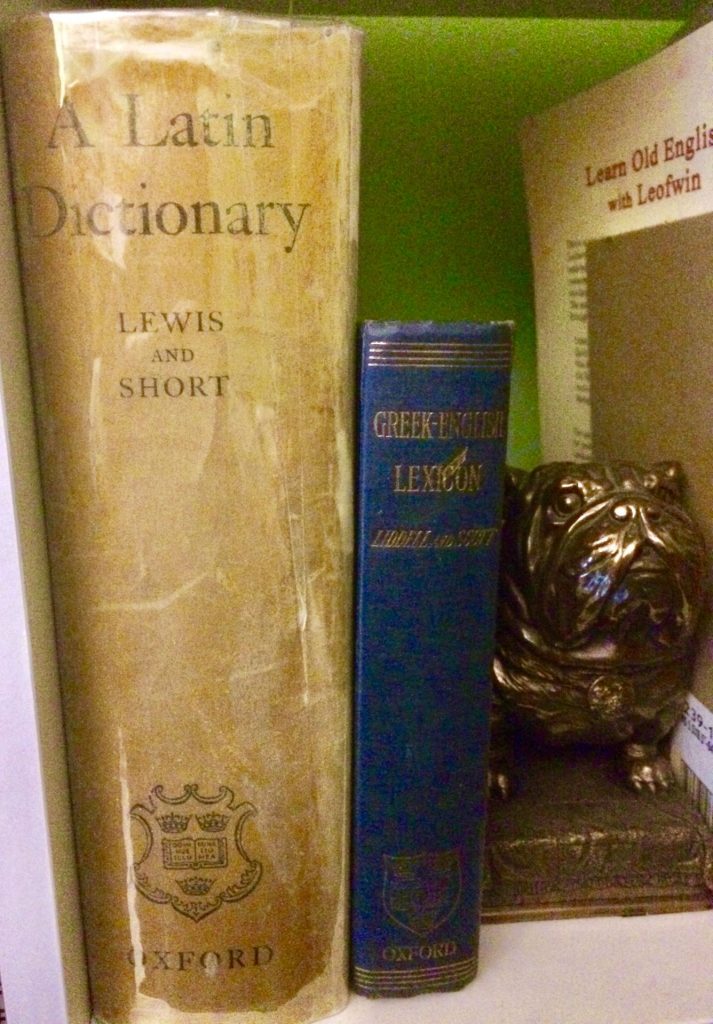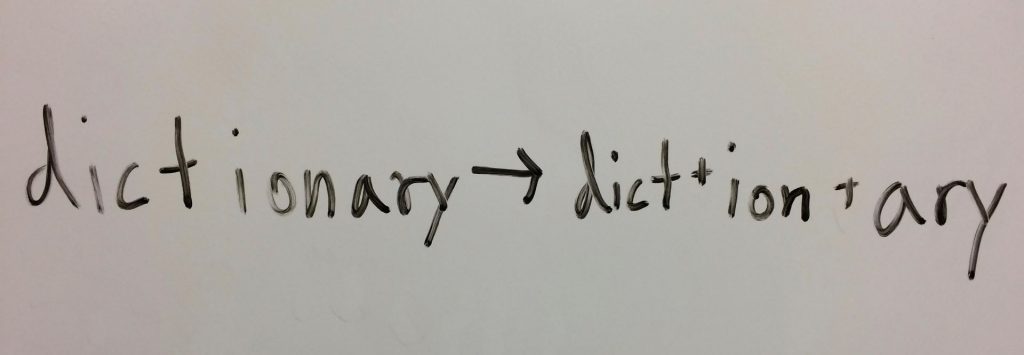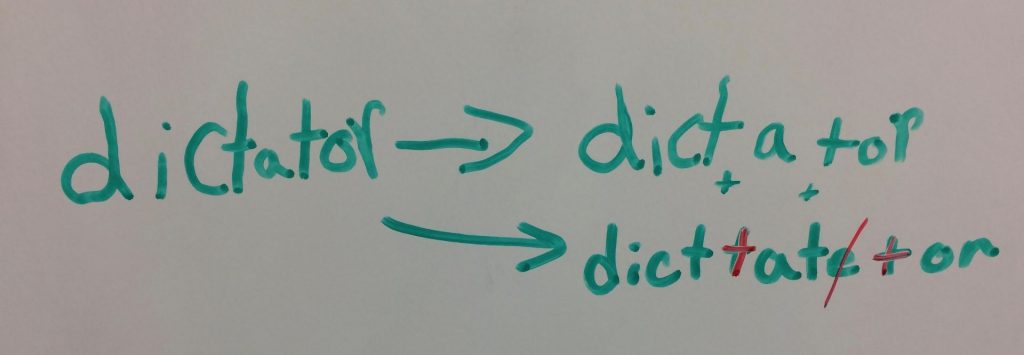Today everyone grabbed a piece of paper. I asked them to put their name at the top and then to copy down the four words I had written on the board. Once that was done, the students were to look carefully at the four words and identify the base that they all had in common. Some spotted it right away. That usually happens. Hands went up right away, but I didn’t call on anyone. I wanted each student (those who usually offer an answer and those who usually don’t) to think through what the base might be.
Once they had identified the base, they were asked to write word sums for each of the words. One of the students said, “We’ve already got the words written down, so it will make sense to write analytic word sums.” I just smiled and nodded.
Now I was ready to ask someone what they thought the base was, and how they came to that decision. A student told me the base was <dict>. He figured that out when comparing dictionary and dictator. They both had <dict> in common, but nothing beyond that.
I wrote the base <dict> on the board and next to it I wrote its denotation “say, tell”. Right away the students started thinking about how each word was related to that meaning. The hands shot up! I said, “Pick any of the four words and tell me what it has to do with “say, tell”.
Dictionary
Kyla said, “A dictionary tells you what a word means.” I pointed to our rack of dictionaries and agreed that a certain kind of dictionary will do that. What a great opportunity to talk about different kinds of dictionaries! We know that the dictionaries we often refer to give us definitions of words. We have a large collection of dictionaries in case what we are looking for is not listed in the first one we grab. I even have a dictionary that has only words related to science!
But we also use the Online Etymological Dictionary almost daily, and that has a different purpose. That dictionary gives us information about a word’s history. We use it to find a word’s ancestors, and to learn its story. We read about the ways a word has been used in its life. We learn about spelling and/or meaning changes that have come about over time. We also discover related words. Sometimes it is valuable to cross reference words in our other etymological dictionaries as well. I have copies of the Chambers Etymological Dictionary, Ayto’s Dictionary of Word Origins, the Dictionary of English Down The Ages, and a Dictionary of Word Roots and Combining Forms.
I showed them my Latin Dictionary by Lewis and Short. It is an old copy and well loved. It is used when we want to find out more information about a Latin word. I keep it on the shelf next to my Greek-English Lexicon by Liddell and Scott. In both of these dictionaries, the words are listed in alphabetical order according to their respective alphabets! These are valuable resources once one knows a bit about Latin and Greek.
Another kind of dictionary is one that one of our students carries – her Italian/English dictionary. She speaks Italian and is learning English. Just yesterday she was writing a poem. Since she has only been in the U.S. since September, it is easier for her to think and write in Italian. So she asked if she could write the poem in Italian and then translate it into English. That system works well for her. When she finishes, we look at it together, and I help with further editing.
I also have a few Rhyming Dictionaries on my shelf. Students use these when they are writing rhyming poetry. By using this kind of dictionary, a student can often find a word that not only rhymes, but is a perfect fit!
Once we finished talking about dictionaries, we realized that we might want to revise our definition of a dictionary. Katya said, “A dictionary lists words and gives us more information about them.” Perfect. And the type of information it tells us depends on the type of dictionary it is!
Prediction
Megan said, “Isn’t that like saying what will happen, but you don’t really know for sure?” Then Clayton added, “Like our Science Fair Projects. We are making predictions, but we haven’t run the experiments yet.” I extended the sense of this word by including those times when we predict how a movie will end, when we’ve only just begun to watch it.
I asked if anyone was familiar with the prefix <pre>. A few hands in each class went up, and the students said it had to do with “before”. Then I asked, “Isn’t that cool? The word itself is revealing its own meaning! The base has a denotation of “say, tell” and the prefix has a sense of “before”. We use this word when someone is telling about something before the something has happened!
Dictator
There were very few fifth graders who clearly understood what a dictator was. One or two mentioned that is was a person who told other people what to do. I stepped in and explained that a dictator was a person who ruled a country and had absolute power over that country. The most famous dictators in history were often cruel to the people they ruled. They were more interested in having power. Amelia asked, “So Hitler was a dictator?” I told her that he was one of the worst dictators in history. I told them that in the next few years they would also be hearing about Joseph Stalin, Benito Mussolini, Mao Tse-tung and others.
Next we talked about the <or> suffix on this word. I told them it was signaling that this word is referring to a person. An <or> suffix can do that in a number of words. So a dictator is a person who dictates orders to the people he rules. An actor is a person who acts. A governor is a person who governs. A donor is a person who donates something.
Then I pointed out that the <er> suffix can sometimes behave in the same way. A teacher is one who teaches. A baker is one who bakes food. A joker is one who makes jokes. I could tell this was an idea they hadn’t thought about before. They were intrigued.
Contradict
When I asked about this word, only one person offered a guess. Hyja said, “Doesn’t it have something to do with arguing?” That was a great place to start! When someone contradicts something someone else says, it can be thought of as a counter argument. A contradiction is often saying the opposite or something very different than what has already been said. For example, if I said that our science journals were due on Tuesday, and Aiden said they were in fact due on Saturday, I could ask him why he was contradicting me. We both can’t be correct.
Now I pointed out the base <contra> “against”. I compared the word contradict to contraband. With the use of contradict, a person is saying something against or with an opposite feel of what has already been said. With the use of contraband, there is a feeling of smuggling something. When you bring an object into an area and you know that object has been forbidden to be in that area, you are going against the rule or the command. That object is contraband.
Word sums
At this point, I asked students to come up to the board, choose one of the four words and write a word sum.
You’ll notice a space in the word sum where a plus sign was. I erased it and shared that the first base in this compound word was <contra>. Then I mentioned that given our discussions recently about the prefixes <con> and <com> and their assimilated forms, I could understand how the students might spot the <con> here and think it was a prefix.
The interesting follow up discussion we had here was with the first word sum. Someone asked, “Is <a> even a connecting vowel?” What a great question! We were able to review that the Greek connecting vowel was <o>, and the Latin connecting vowels were <i>, <u>, and <e>. We were also able to review the suffixing convention of replacing a final non-syllabic <e>. I asked if we could remove the <or> suffix and still have a recognizable word. Everyone agreed that we would be left with dictate. So I asked how we would spell that. Immediately students recognized the final non-syllabic <e> on the suffix <ate> that would be replaced with the <or> suffix in this word.
It is important to keep pointing out that a final non-syllabic <e> may not always show up in a final word, but that doesn’t mean it is not part of a word’s construction or word sum.
This activity was well received. Students who have been hanging back, not expecting to understand this are starting to volunteer to write word sums at the board. Students who are thoroughly enjoying this way of looking at words are asking amazing questions. As we were discussing how the words were related in meaning to the base <dict>, Kayden raised his hand and asked, “How does the word addiction fit in to all this?” He recognized that <ad> would be a prefix, <dict> would be a base, and <ion> would be a suffix. I told him that the prefix <ad> brought a sense of “to” to the word. And that a person with an addiction is a person who has declared a specific habit to be controlling in their life.
We didn’t delve all the way into this base today. We didn’t make a matrix full of <dict> possibilities. But we did practice using a list of words as evidence for proving a base element. And we did practice taking the time to understand the meaning connections between members of a word family. And we did review a suffixing convention as well as learn about two agent suffixes. Today was about building our knowledge base. It was about learning things to take with us as we move forward in studying other words and their families.

